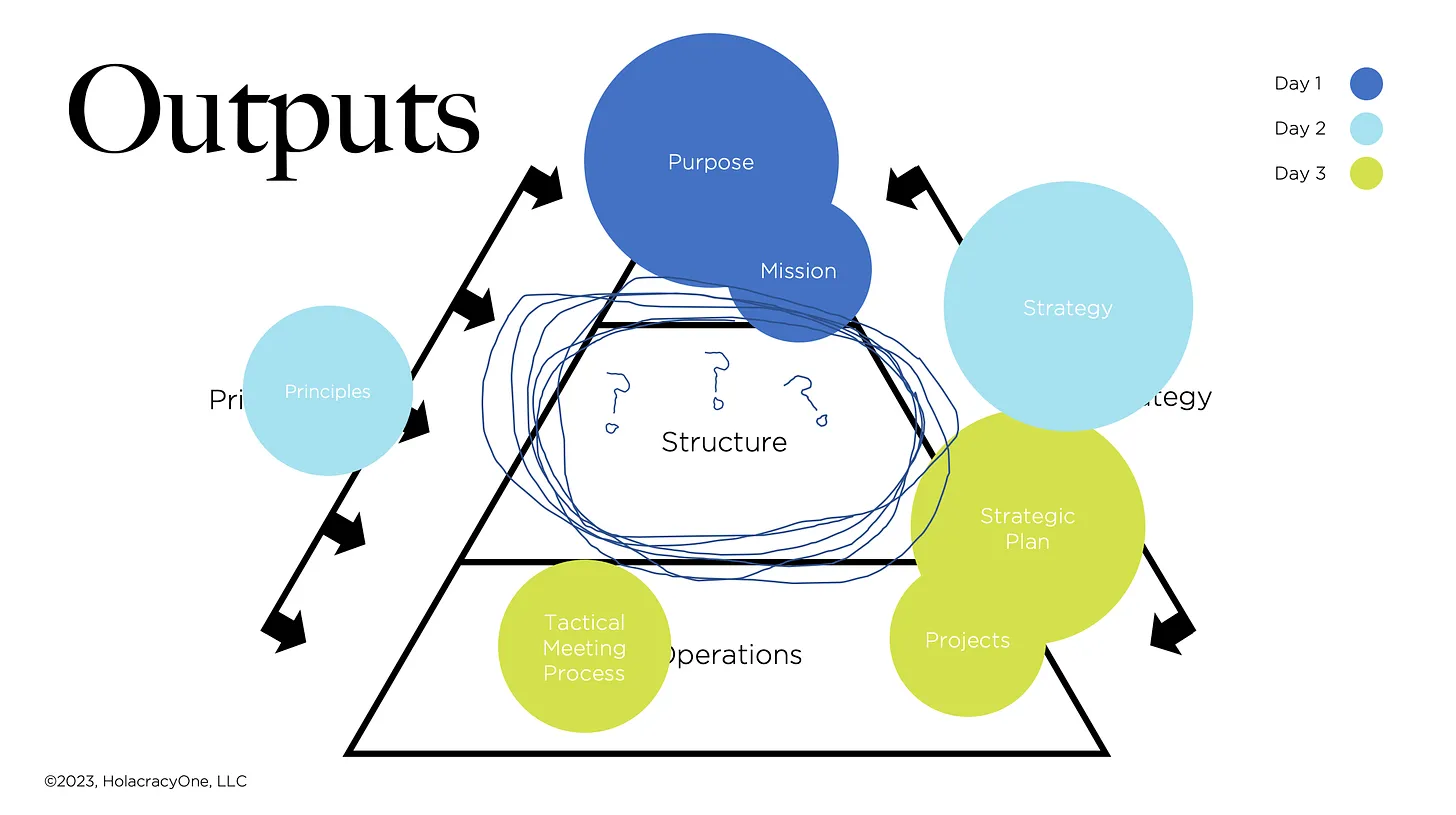Holacracy is “Structure-Oriented” [Video Walk Through]
How Holacracy Fits (or Doesn’t Fit) with Some Other Conventional Management Terms Like, “Mission,” and “Strategic Plan”
How Holacracy Fits (or Doesn’t Fit) with Some Other Conventional Management Terms Like, “Mission,” and “Strategic Plan”

Even if you know a lot about Holacracy, you may struggle to understand how Holacracy fits (or doesn’t fit) with some other conventional management terms like, “mission,” “principles,” and “strategic plan.”
Well, I created the visual above to explain to a client how I think about that relationship, but it turns out this model also helped me highlight why Holacracy is a uniquely structure-oriented approach to organizational change.
But you don’t need to decipher it on your own because I recorded a video walk through, which I embedded below to explain it all.
For some added convenience, here are some tidbits from the video that you might miss:
• A conventional “strategic plan” = Holacracy “projects” + Holacracy circle priority. Meaning, if you wanted to write up a conventional strategic plan in Holacracy-terminology, that plan would essentially be a cascading set of priority “projects.” You can read more about Holacracy-style projects here, and more about how Holacracy defines, “strategy,” here.
• “Mission” is most likely a kind of Holacracy-style “purpose.” This is based on my appropriation of Tim Kelley’s definitions in which “mission” is a sub-type of purpose. For more on how Holacracy defines, “purpose” read this.
• “Company principles,” don’t have a direct corollary in Holacracy. However, I did briefly mention that “company values or principles,” to me, are best used as descriptors of preferences or polarities within the culture rather than aspirational guidance (i.e. prescriptive norms) for how people should behave. I have A LOT to say about this, and I’m planning on releasing something soon, so if you’re curious, please click subscribe below!
As always, please let me know if you have any comments or questions because I really enjoy talking about this stuff (as if you couldn’t already tell).
To learn more about self-management, join a community of pioneers and check out our e-courses → Self-Management Accelerator
